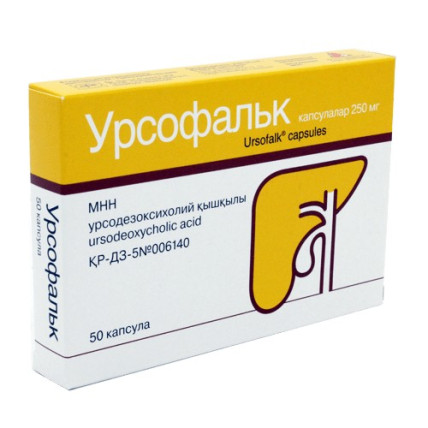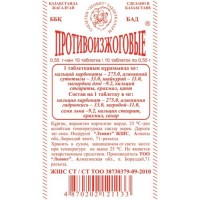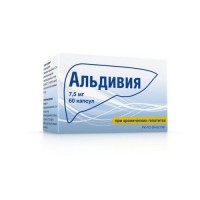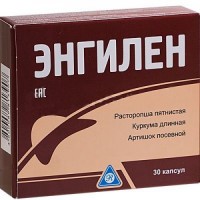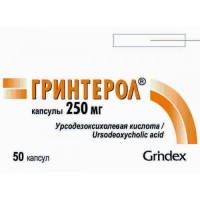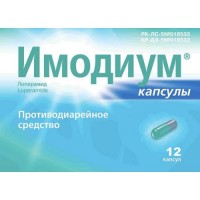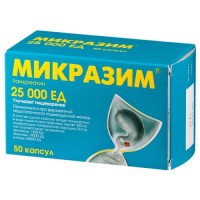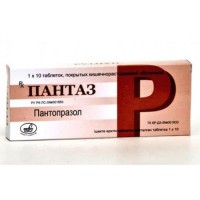Ursofalk® (Ursodeoxycholic Acid) 250 mg, 50 capsules
- $66.50
What Is Ursofalk®?
Ursofalk® is a medication containing ursodeoxycholic acid (250 mg per capsule), a naturally occurring bile acid that helps improve liver and gallbladder function.
It is widely used to treat and manage conditions such as cholesterol gallstones, bile reflux gastritis, and primary biliary cirrhosis (PBC).
This medication works by reducing cholesterol levels in bile, improving bile flow, and protecting liver cells from damage.
Ursofalk® is also prescribed for children aged 6–18 years with hepatobiliary disorders caused by cystic fibrosis, helping to manage liver-related complications in this condition.
Its ability to dissolve gallstones without invasive procedures makes it an effective non-surgical option for suitable patients.
Additionally, it plays a key role in combination therapies for chronic liver conditions, enhancing overall liver health.
Designed for oral use, each capsule is intended to be swallowed whole with water, making it a convenient option for long-term treatment plans.
Ursofalk® is known for its safety profile when used under medical supervision, though regular monitoring is essential to ensure optimal results.
What Are the Uses of Ursofalk®?
Ursofalk is prescribed for the following conditions:
- Dissolving cholesterol gallstones: Effective for stones up to 15 mm in diameter in patients with normal gallbladder function.
- Managing biliary reflux gastritis: Alleviates symptoms caused by bile backflow into the stomach.
- Supporting liver health in cystic fibrosis: Helps children (6–18 years) manage hepatobiliary issues.
- Treating primary biliary cirrhosis (PBC): Used as part of combination therapy in patients without decompensation signs.
How to Take Ursofalk®?
For Dissolving Cholesterol Gallstones:
- Dosage: 10 mg per kg of body weight daily.
- Schedule: Capsules should be taken in the evening before bed, swallowed whole with water.
- Duration: Treatment lasts between 6 to 24 months. Progress is monitored with ultrasound or X-rays every 6 months.
For Biliary Reflux Gastritis:
- Dosage: One capsule daily in the evening.
- Duration: Typically 10 to 14 days, depending on the condition.
For Primary Biliary Cirrhosis (PBC):
- Dosage: Based on body weight (14 mg per kg daily). Doses are initially divided into multiple daily intakes, transitioning to a single evening dose after improvement.
- Duration: Treatment can be continued indefinitely under medical supervision.
For Children With Cystic Fibrosis:
- Dosage: 20 mg per kg daily in 2–3 divided doses, with adjustments up to 30 mg per kg if necessary.
What Precautions Should Be Taken?
- Liver Function Monitoring: During the first three months, liver enzyme levels (AST, ALT, gamma-GT) should be checked monthly, then every three months.
- Gallstone Monitoring: Imaging tests (ultrasound or X-rays) are required every 6 months to monitor treatment effectiveness and detect gallstone calcification.
- Pregnancy Precautions: Women of childbearing age should use non-hormonal contraception, as hormonal contraceptives may promote gallstone formation.
Are There Interactions With Other Medications?
Ursofalk may interact with certain medicines:
- Avoid simultaneous use with cholestyramine, colestipol, or antacids containing aluminum, as these reduce the absorption of ursodeoxycholic acid.
- May affect absorption of cyclosporine or ciprofloxacin. Monitor blood levels and adjust doses if needed.
- Increased effects: Statins like rosuvastatin may show slightly increased blood levels.
What Are the Possible Side Effects?
- Common: Soft stools or diarrhea.
- Rare: Severe abdominal pain, calcification of gallstones, or worsening of PBC symptoms in late stages.
- Very Rare: Skin reactions like hives.
When Should Ursofalk® Be Avoided?
Ursofalk should not be used in the following cases:
- Acute inflammation of the gallbladder or bile ducts.
- Obstruction of bile ducts.
- High calcium-containing (radiopaque) gallstones.
- Gallbladder dysfunction.
- Known hypersensitivity to bile acids or components of the medication.
- Children under 6 years or those with untreated biliary atresia.
How Should Ursofalk® Be Stored?
Store Ursofalk in a cool, dry place at temperatures below 25°C (77°F), away from light and moisture.
Keep out of reach of children and do not use the medicine after the expiration date.
Special Considerations for Use in Pregnancy and Breastfeeding
Limited data exists on the use of Ursofalk during pregnancy.
Women who are pregnant or planning to conceive should consult their doctor before use. Non-hormonal contraception is recommended during treatment.
The concentration of ursodeoxycholic acid in breast milk is low, and adverse effects on nursing infants are unlikely.
